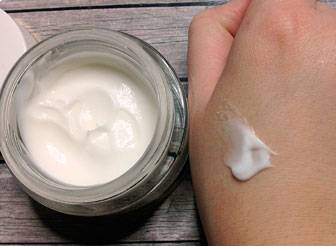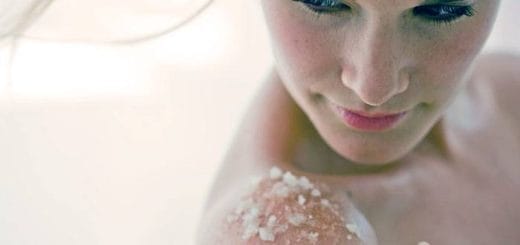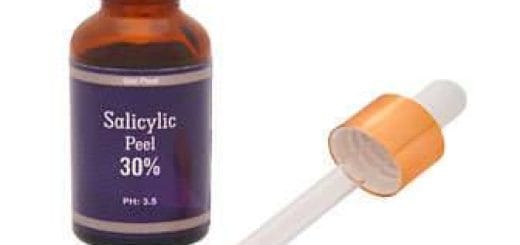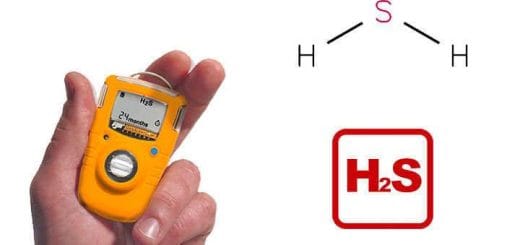It is a substance produced by the enzymatic oxidation of lactose and is the union of glucuronic acid and galactose. Relatively new, lactobionic acid has been used in cosmetics only recently. It was previously used in medicine to stabilize and preserve organs for transplants.
If you’re thinking about renewing your skin, this is one of the favorite products for chemical peeling. It is one of the current innovations for this type of facial rejuvenation treatment since it irritates less. It works layer by layer, which gives it a milder, less aggressive action compared to other types of acids used for these purposes.
Lactobionic acid properties
It belongs to the so-called Alpha Hydroxides group, AHA, or Alpha hydroxides, and molecularly is the same as other more aggressive acids like PHA. The advantage of AHAs is that they are gentler. Specifically, this acid has the property of attracting and retaining water, so it also serves as a moisturizer and antioxidant due to preventing the formation of free radicals (hydroxyl) produced by iron.

If that doesn’t seem enough, it also prevents collagen degradation. So all these properties of lactobionic acid make it a widely used ingredient in cosmetics. Its qualities summarized are:
- Exfoliant
- Moisturizer
- Antioxidant
- Preservative
Uses in facial rejuvenation treatments
- Improves skin elasticity
- Eliminates small expression wrinkles and improves the appearance of deep ones.
- Superficial dermis aging due to age or premature situations.
- Acts against spots and hyperpigmentation.
- Facial sagging.
- Scars and ingrown hairs.
- Photoaging.
- Acne and rough skin sensation.
- Sensitive skin to other types of treatments, allergies, etc.
Polyhydroxy acids penetrate the skin gradually, acting layer by layer from top to bottom, which makes them more controllable. Furthermore, with their use, you avoid the burning and redness sensation. The fact that it is one of the preferred products for exfoliation and chemical facial peeling is no coincidence.
As you can see, it is recommended for people with acne because it is very non-irritating. That said, I repeat that you should always be careful with any type of acid or abrasive substance.
Next, we explain the precautions you should take when using it.
Contraindications and precautions
Like all acids, it should be used cautiously, and a patch test should be performed on a small area of the skin to check for irritation, allergies, or adverse reactions. Not everyone tolerates substances the same way, whether natural or not. So the best thing you can do is not take risks and if you’ve never used it before, try it on a small patch of skin.
The contraindications of lactobionic acid are:
- Skin disorders.
- Pregnancy and breastfeeding.
- High body temperature.
- Children.
- Allergy to other components used in peels.
- Psoriasis.
- Superficial or deep wounds and cuts.
If you find yourself in any of these situations, it is not advisable to use it. In general, if the skin shows signs of poor health, it is not advisable to use acids. Necrosis, pustules, wounds, redness, etc. The best thing is to consult a doctor beforehand. You lose nothing, and you ensure that the exfoliation will go well. You could cause burns and serious problems if the area is hypersensitive. People with psoriasis should be very careful with chemical peels as they can cause psoriatic plaques to spread as a rebound effect.
For the most part, although after saying all this it might seem like, oh my God, no, this is crazy, in reality, lactobionic acid is quite safe. It is used in thousands of cosmetics from well-known brands, and many women use it at home. If you have normal dermatological health, it will work great for helping to rejuvenate your skin.




Where can I buy it, how often should I apply it, and how many times is it used? Thank you!
Hello Marta, you can buy it at online cosmetic stores and pharmacies. Currently, it is commonly found as an active ingredient in creams with lactobionic acid. Pay attention to the components they include.
As for the usage time, follow the product instructions. If it is for peeling, purchased separately, it’s a one-time use since the facial skin needs to recover. After 1 or 2 months, it can be used again, but with caution.
However, now you can find it in cosmetics, and its concentration is low, so it is typically used daily if the percentage is very low, or every 7 or 15 days, depending on the specific product.
Is it advisable to use it in winter? And why not in mental illnesses? Thank you, I await your response.
Hello Mónica, I’ve been reviewing the usage guidelines for lactobionic acid, but there’s nothing mentioned about this point. We will correct that since it doesn’t make sense for it to be there. Thanks for asking.
Regarding using it in winter, it’s better when it’s less strong. Since the skin is more sensitive, using lactobionic acid in colder months is preferable. It’s also a good idea to use sunscreen during the day to avoid the appearance of spots. This applies whenever using AHA acids, depigmenters, and similar products.
I really like this product, it gives me more peace of mind to use it compared to the classic ones, thank you very much for the information on contraindications!
Good evening, I’ve read that it’s a component of some keratins and that this is what smooths the hair and is better than others that contain a derivative of formaldehyde. Or is it the same thing? I would appreciate it if you could clear up my doubt.
Where can I get it? I just came to La Plata this month; I’m a Peruvian cosmiatrist.
Lactobionic acid is a PHA, and AHAs are more active on the skin because they are absorbed more quickly.
Thank you very much for your appreciation and input, Ana.
Good evening, about a year ago, I had a chemical peel, and I still have this gel product. I would like to know if I can use it independently of the peel treatment. Should I avoid the sun when I apply it? Should I only apply it at night? Before or after the moisturizer? Thank you in advance.
My question is how much longer after the expiration date can it still be used? Thank you. I look forward to your response, thanks.
I have been searching tirelessly for where to buy 15% Lactobionic acid for peels in Mexico and I can’t find anywhere that sells it. Do you know where I can get it? Thanks in advance.
The Ziaja brand cream with mint and cucumber contains lactobionic acid.